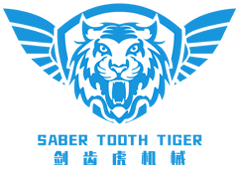21
2025
-
06
The Future of Metal Fabrication: CNC Busbar Punching and Cutting Explained
The Future of Metal Fabrication: CNC Busbar Punching and Cutting Explained Table of Contents 1. Introduction to Metal Fabrication 2. What is CNC Busbar Punching? 3. What is CNC Busbar Cutting? 4. Advantages of CNC Busbar Technology 5. Applications of CNC Busbar Punching and Cutting 6. The Future of CNC Busbar Technology 7. Common Challenges in Metal Fabrication 8.
The Future of Metal Fabrication: CNC Busbar Punching and Cutting Explained
Table of Contents
- 1. Introduction to Metal Fabrication
- 2. What is CNC Busbar Punching?
- 3. What is CNC Busbar Cutting?
- 4. Advantages of CNC Busbar Technology
- 5. Applications of CNC Busbar Punching and Cutting
- 6. The Future of CNC Busbar Technology
- 7. Common Challenges in Metal Fabrication
- 8. FAQs about CNC Busbar Punching and Cutting
- 9. Conclusion
1. Introduction to Metal Fabrication
In the rapidly evolving landscape of manufacturing, **metal fabrication** stands at the forefront of innovation. As industries continue to demand greater efficiency and precision, techniques such as **CNC (Computer Numerical Control)** machining have emerged as transformative forces within metalworking. This article explores the cutting-edge technologies of **CNC busbar punching** and **cutting**, which are redefining how components are produced in various sectors, including electrical, automotive, and aerospace manufacturing.
2. What is CNC Busbar Punching?
**CNC busbar punching** refers to the automated process of creating holes and features in busbars using CNC machinery. A busbar is a conductive material, typically made of copper or aluminum, used to distribute electrical power in substations and electrical panels. By employing CNC technology, manufacturers can achieve higher levels of precision and repeatability in busbar production.
How CNC Busbar Punching Works
The process begins with a digital design created using CAD (Computer-Aided Design) software. This design is translated into machine code, which guides the CNC punch press to perform the required operations. The automation allows for intricate designs to be produced with minimal human intervention, reducing the risk of errors and increasing production speed.
Key Features of CNC Busbar Punching
- **Precision**: CNC busbar punching ensures that holes and cutouts are produced to exact specifications, critical for electrical conductivity.
- **Speed**: The automated process significantly reduces production time compared to traditional methods.
- **Customization**: Manufacturers can quickly adapt designs to meet specific customer requirements, allowing for flexible production runs.
3. What is CNC Busbar Cutting?
Similar to busbar punching, **CNC busbar cutting** involves the automated slicing of busbars into desired lengths and shapes. This process is essential for preparing materials for assembly, ensuring that all parts fit together seamlessly in the final product.
How CNC Busbar Cutting Works
CNC busbar cutting utilizes advanced machinery to execute precise cuts as dictated by the programmed designs. The process can involve various cutting methods, including shearing, sawing, and plasma cutting, depending on the material and thickness of the busbar.
Key Features of CNC Busbar Cutting
- **Accuracy**: The CNC technology ensures that cuts are made with minimal deviation, enhancing the integrity of the final assembly.
- **Versatility**: Different cutting techniques can be employed, allowing manufacturers to select the best method for their specific needs.
- **Efficiency**: The automation of the cutting process streamlines production, reducing lead times and costs.
4. Advantages of CNC Busbar Technology
The integration of CNC technology in busbar punching and cutting provides numerous advantages to manufacturers.
Increased Efficiency
CNC machines operate continuously and do not require breaks like human operators. This capability allows for higher production rates and the ability to work on multiple projects simultaneously.
Enhanced Quality Control
The precision offered by CNC technology minimizes the possibility of human error, thus improving the overall quality of the products. Consistent quality control leads to higher customer satisfaction and fewer returns.
Cost-Effectiveness
While the initial investment in CNC machinery can be substantial, the long-term savings in labor costs, material waste, and increased production efficiency typically outweigh these initial expenses.
5. Applications of CNC Busbar Punching and Cutting
The capabilities of CNC busbar punching and cutting are utilized across various industries.
Electrical Engineering
In electrical engineering, busbars serve as critical components in power distribution. The precision of CNC processes ensures that these components function effectively in high-demand environments.
Aerospace Manufacturing
The aerospace sector demands the utmost precision due to safety concerns. CNC busbars are used in aircraft electrical systems, where reliability is paramount.
Automotive Industry
CNC technology is also prevalent in automotive manufacturing, where busbars are used for electrical systems in electric and hybrid vehicles, playing a crucial role in performance and safety.
6. The Future of CNC Busbar Technology
Looking ahead, the future of CNC busbar punching and cutting is shaped by ongoing advancements in technology.
Integration with Industry 4.0
The future of manufacturing is closely tied to **Industry 4.0**, where the Internet of Things (IoT) plays a significant role. CNC machines will increasingly be interconnected, allowing for real-time monitoring and data analysis to enhance production efficiency and predictive maintenance.
Sustainability Initiatives
As industries focus on sustainability, the demand for eco-friendly manufacturing processes will grow. CNC technology can contribute to reduced waste and energy efficiency, aligning with global sustainability goals.
7. Common Challenges in Metal Fabrication
Despite the advantages of CNC busbar technology, manufacturers face several challenges in metal fabrication.
Material Costs
The prices of raw materials can fluctuate significantly, affecting production costs. Manufacturers must stay informed about market trends to manage expenses effectively.
Skill Shortages
The transition to advanced technologies has created a skills gap in the workforce. Investing in training programs is essential to ensure employees are equipped to operate sophisticated machinery.
Technological Integration
Integrating new technologies into existing workflows can be complex and time-consuming. Manufacturers need to develop strategies for seamless transitions without disrupting production.
8. FAQs about CNC Busbar Punching and Cutting
Q1: What materials can be used for busbars?
A: Busbars are typically made from copper or aluminum due to their excellent electrical conductivity and corrosion resistance.
Q2: How does CNC technology benefit small manufacturers?
A: CNC technology allows small manufacturers to compete by enhancing precision, reducing waste, and improving production speeds, thus enabling them to fulfill complex orders efficiently.
Q3: Can CNC busbar machines be customized?
A: Yes, CNC busbar machines can be customized to suit specific production needs, including different hole patterns and cutting specifications.
Q4: What maintenance is required for CNC machines?
A: Regular maintenance includes cleaning, lubricating moving parts, and software updates to ensure optimal performance and longevity.
Q5: How can a company transition to CNC technology?
A: Transitioning to CNC technology requires investment in machinery, training for staff, and potentially restructuring production workflows to integrate automation.
9. Conclusion
The evolution of **CNC busbar punching and cutting** technology represents a significant leap forward in the metal fabrication industry. As we move into the future, these innovations promise not only to enhance production efficiency and precision but also to pave the way for sustainable practices in manufacturing. By embracing these advancements, industries can meet the growing demand for high-quality, reliable products while maintaining a competitive edge in the ever-evolving market landscape. The future of metal fabrication is here, and its potential is limitless.
Related news





